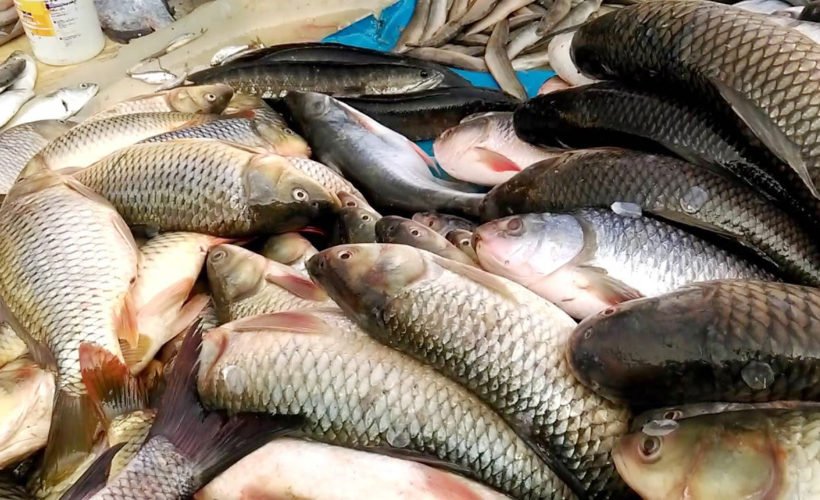
The discovery of formalin in imported fish led to panic among consumers and threw the market into disarray
By SAMAY SHETTI
A ‘Goenkar’ and ‘nustem’ are inseparable. An integral part of Goan cuisine, a daily meal without fish seemed inconceivable. Until it was discovered that the fish that Goans have been consuming had been preserved using formalin, a cancer-causing chemical. The consequent panic brought the entire fisheries market to a screeching halt. “Information” on the issue – authentic and otherwise – flooded social media, thus fuelling the panic.
The formalin fiasco began much before the Department of Food and Drug conducted a surprise test on the fish at the Margao wholesale fish market.
Formalin is a derivative of formaldehyde – a chemical commonly seen in laboratories in schools, where it is used to preserve organic specimens in sealed glass jars. The substance is carcinogenic to humans and not at all fit for consumption.When mixed in the right proportion with water, the substance forms a paste which is used for embalming and preventing the decay of dead cells
The government of Kerala, with an eye towards with an interest of ensuring hygiene and safety at fish-handling and distribution centres, launched an initiative called ‘Operation Sagar Rani’. As a part of this operation, the authorities seized nearly 9600 kilograms of fish preserved in formalin at the border check in Kollam district on June 25, 2018. Additionally, fish weighing 6000 kilograms was seized and returned to Hyderabad after being tested positive for the said toxin from Edappazhanji fish market in Thiruvanantapuram. This, among other crackdowns, took the quantity of confiscated fish from Kerala alone to a whopping 21,600 kilograms. Fish throughout the country was considered unsafe for consumption as about 5280 kilograms of formalin-laced fish was seized from Kohima in Nagaland; the fish was imported from Andhra Pradesh. This triggered a chain reaction, with all state governments springing into action. According to a report by The Hindu, over 28 tonnes of fish and prawns preserved with formalin were seized from across the country in the past month.
In Goa, the FDA conducted the raid on July 12, 2018. The tests on the samples from over 17 trucks from various states indicated the presence of formalin. The trucks were seized immediately and samples from them were forwarded to the FDA laboratory for a detailed analysis. The impact of this raid sent tremors through the fisheries market across the state.
What further compounded the matter was the FDA statement that the fish sample tested had formalin “within permissible limits.” This mandated getting information on what formalin is, what purpose it serves, how it is used and, more importantly, is there such a thing as “permissible limit” for consumption.
As the FDA report came out in the evening, the story took another interesting turn. The report said that the formalin present in the sample was within the “permissible limits”. Formalin is a derivative of formaldehyde – a chemical commonly seen in laboratories in schools, where it’s used to preserve organic specimens in sealed glass jars. The substance is carcinogenic to humans and not at all fit for consumption.
When mixed in the right proportion with water, the substance forms a paste which is used for embalming and preventing the decay of dead cells. Formalin, which contains 37–40% formaldehyde, is used for the same purpose in mortuaries and laboratories.
Because of its preservative qualities, it has been unfortunately used to preserve fish.
Fish, being a highly perishable commodity, starts decaying rapidly if it isn’t maintained at the proper temperature. To avoid decay and increase shelf life, sellers now use chemicals such as formalin and ammonia. If the point of sale is far from the place of catch, formalin is used as a preservative. Meanwhile, ammonia is mixed with the water that is frozen so that the resultant ice melts at a much slower pace.
The chemical can have devastating effects on the human body. Ingesting merely 30 ml of a solution which contains 37% formalin is sufficient to kill an adult human. Once ingested, formalin releases toxins into the body. If it reaches the stomach, a person can experience stomach ache and nausea. The effects of this chemical does not fade even if the fish or vegetables treated with it is cooked thoroughly. Sustained ingestion can lead to cancer.
Chief Minister Manohar Parrikar was prompt to ban all import of fish till systems were put in place to test fish and ensure its safety for consumption. The ban has since been lifted and import has resumed. A public interest litigation has been filed by Shivraj Kamat Tarcar before the Goa Bench of the Bombay High Court while Advocate Rajiv Gomes has filed a complaint against wholesale fish agents and operators with the South Goa Superintendent of Police.
Goa sees a daily average consumption of 70-90 tonnes of fish, but the threat of formalin led to a temporary boycott of sorts, with people refraining from patronising fish markets. Since the ban on mechanised fishing and imports have been lifted (after fish samples tested negative for formalin), business is picking up again. However, the inflated rates had put fish beyond the reach of the common man for some time. Even hoteliers and restaurant owners felt the heat. Before the ban was lifted Milind Bhonsle, a partner at Casa Bhosle Panaji, said, “Business has been down by 50% since the formalin in fish controversy. About 90% of customers normally want to eat fish thali, but now they don’t want it. Who wants to die?”
While the dust is now settling, it remains to be seen what steps will be taken to consistently ensure our food is fit for eating





